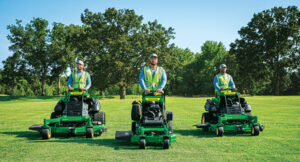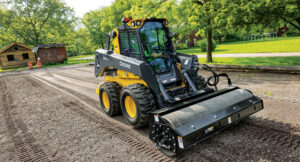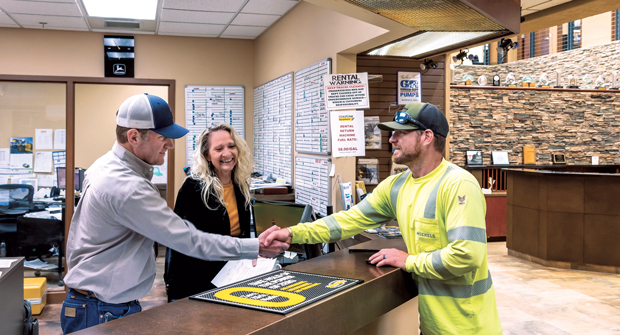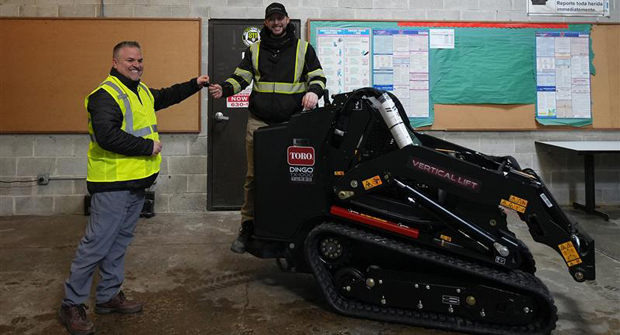A new landscape business owner may find it daunting to make a large make a large (whether literally or monetarily) equipment purchase. The options, from mowers to design/build equipment, can seem endless, as can the choice of brands, dealers and features.
To help get your venture into the landscaping business off to a strong start, we spoke with experts from John Deere and Takeuchi to walk through the purchasing process, from identifying the equipment to your financing options.
Know what you need
With technology continuing to evolve, it might be tempting to splurge on the latest and greatest features. However, Lee Padgett, national product manager for Takeuchi-US, recommends prioritizing certain high-tech features that can help your business grow.
For example, features such as telematics can be valuable for fleet management, reducing downtime and improving job site efficiency.
“While some new business owners may initially think that they can track these things on their own, they need to consider how much time they’ll realistically be able to devote to it,” Padgett says. “Having this information compiled for you via telematics means you can spend more time out working on a job site and less time in the office — or even worse, the repair shop.”

Luke Gribble, go-to-market manager, commercial mowing equipment and compact construction equipment at John Deere, agrees that telematics are a good place to start adding technology to your business.
“(Telematics) give you insights into your fleet that allow you to monitor your business and machines effectively so that you can ensure that they’re doing what you want them to do when you’re getting the most out of them as possible,” he says.
Finding your partner
Once you’ve nailed down the features you’re looking for, Gribble and Padgett agree that finding the dealer you want to work with should be the next step. Plenty of variables come into play in the search for the correct dealer or distributor, ranging from their location to the deals they offer.
But the most important, Padgett says, is the capability of the dealership to help you not only during the purchase process, but also after you’ve bought the machine.

Experts advise that starting your business with technologically-advanced machines is much easier than retrofitting your fleet in the future. (Photo: John Deere)
“Will they be able to support you through the whole life of that machine, not just when you’re making the first purchase? It’s important to consider and determine when you’re building your business,” he says.
Padgett adds that part of that process entails knowing the brand you’re working with.
“You want to go with a brand with a reputation for high-quality products, a strong dealer network and excellent customer support,” he says. “You also want a brand that’s been around long enough to weather the ups and downs of the equipment industry. These machines are not inexpensive purchases, so you have to do your homework and determine which one is the best fit for you and your current and future needs.”
Where can you meet these dealers? For starters, Gribble says visiting local, state or national trade shows is a great way to meet dealers looking to engage with customers.
“You’ll meet some different dealers there who can help you form that relationship, and don’t be afraid to ask them questions. Ask them about their warranty, their parts and service capabilities and ask about maintenance and different programs they have,” he says.
Gribble adds that most manufacturers also have a dealer locator on their websites to further help you find and consider your options.
Financing your purchase
According to Padgett, insurance and financing costs can catch new owners off guard when it comes time to make the final decision and purchase the equipment.

“Many lenders require equipment insurance, which adds to monthly expenses,” he says. “Additionally, financing terms can impact the overall cost of ownership — longer loan terms might offer lower monthly payments but lead to higher interest costs over time. It’s important to factor these financial obligations into the business budget.”
Some manufacturers offer in-house financing options — including Deere — which can help to save a step and some potential headaches during the purchasing process.
No matter the route a business owner takes, Gribble says to learn about all of the potential options a lender offers, similar to when vetting a dealer.
“It can be a zero-percent financing rate or a skip payment solution if you have cash flow issues in the wintertime,” he adds. “(These options) are not just for customers that have been in the business and have a lot of assets; it’s a great way for new customers to get a new machine and give them a leg up in starting their business.”


